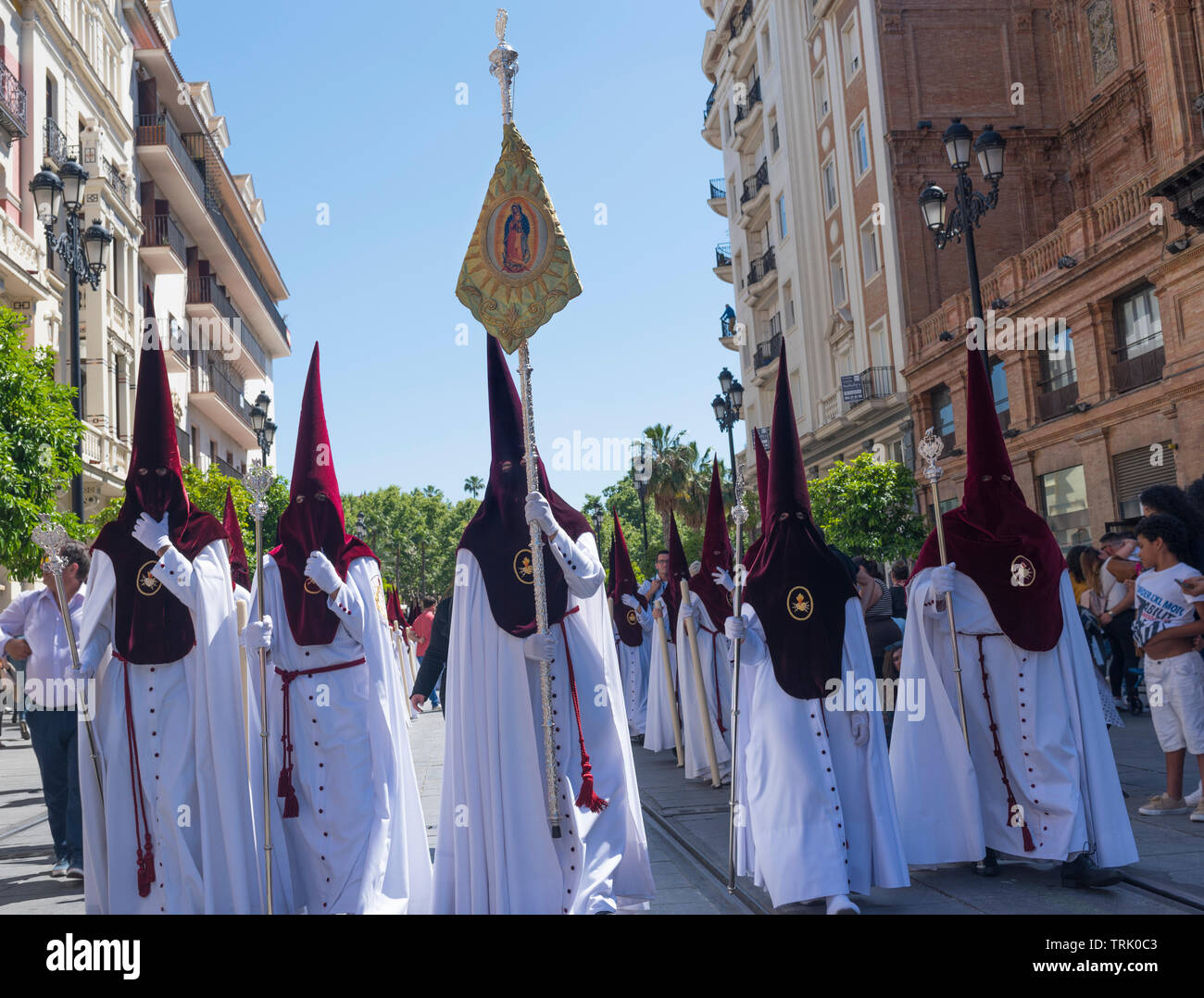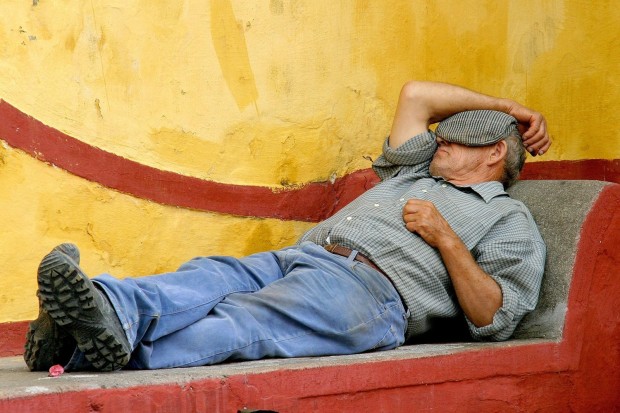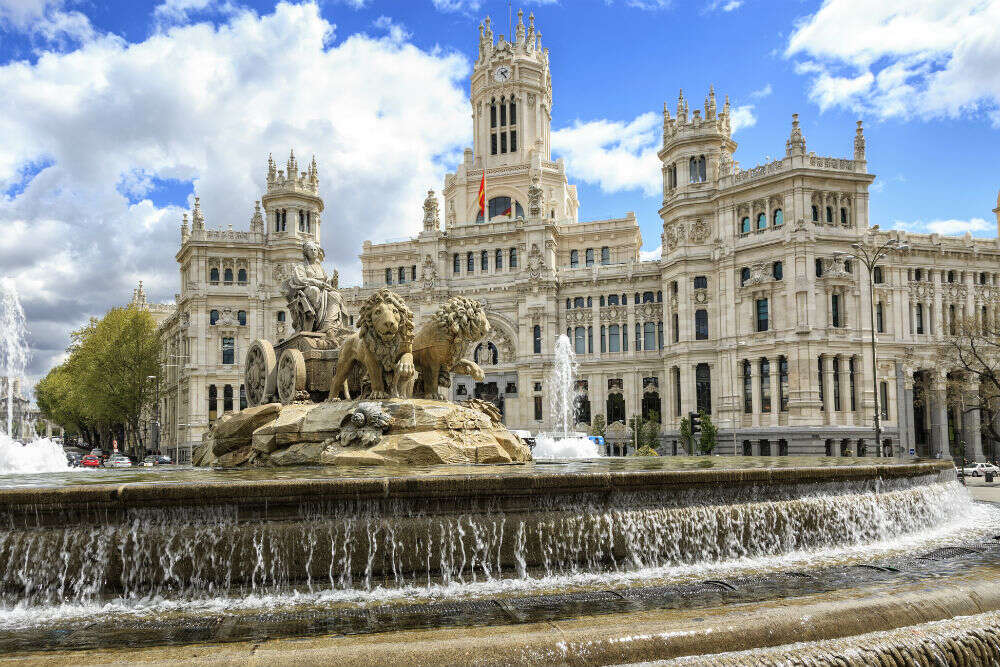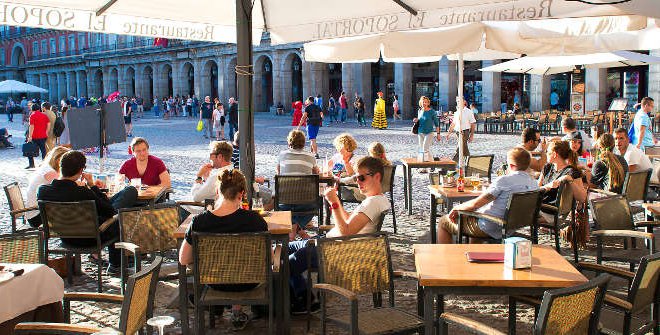Hi guys, it has been a minute! The spring of 2022 I studied abroad in Madrid and put together the video at the link below to share my experience. Enjoy!
https://drive.google.com/file/d/1F_LhJ9kRXj0wbyG7RcVbedHknB2keBsZ/view?usp=sharing
Hi guys, it has been a minute! The spring of 2022 I studied abroad in Madrid and put together the video at the link below to share my experience. Enjoy!
https://drive.google.com/file/d/1F_LhJ9kRXj0wbyG7RcVbedHknB2keBsZ/view?usp=sharing
Here I will highlight a few of the biggest cultural celebrations within Spain. If you can plan your travel around these times, they can be truly incredible and life changing experiences!!
First is La Semana Santa, or Holy Week. It is widely celebrated as Spain is a largely catholic country, during the week leading up to easter. There are various events that take place during holy week, but daily, parades can be seen on the streets of every major city in the country.

One cultural distinction that is important to note between the US and Spain is the hoods that have been traditionally worn during holy week since well before the US was discovered. They wear multicolored, pointy hoods, out of reverence for different saints. Unfortunately, the KKK in the US has a similar outfit, though the two could not be less related. Do not be surprised to see these hoods in parades if travelling during holy week!

Though Christmas is celebrated in Spain, traditionally, children receive their presents on El Día de los Reyes Magos, or Three Kings day. This shortly follows christmas on January the 6th. It represents when the wise men travelled to discover Jesus as a baby in the manger, and gave him gifts of gold, frankincense, and myrrh.

La Tomatina is a giant food fight. Literally. Starting in the late 1940’s, the town of Buñol, an hour drive from Madrid, has played host to one of the worlds largest food fights. It has grown so large that fire engines have to pressure wash the town square to clean up all the mess afterwards! It happens the last wednesday of every August, so travel around this time if tomato fights sound like an activity for you!

This is just a glimpse of some of the crazy and super cool holidays that take place in Spain throughout the year. These are once in a lifetime experiences that you will not want to pass up on if you have the chance to observe, or even participate!
Sadler, S. (2018). Top 7 cultural celebrations in Spain. Retrieved April 10, 2021, from https://capaworld.capa.org/top-7-cultural-celebrations-in-spain
One of the things you are sure to encounter abroad is Tapas. They are a placeholder for small snacks on bread, served hot or cold, in most bars around Spain. Because dinner is served so late in Spain, it is not uncommon for people to bar hop between being done with work and dinner, or even to have these tapas for dinner. There are even entire districts dedicated to each type of bar serving a unique tapas!

As you can see, there are a wide variety of toppings for tapas. When going out with friends, you can make night of bar hopping and trying different tapas, as they are a very good conversational food. The unique culture around tapas that has developed in Spain is something anyone travelling abroad should certainly experience.
Beyond tapas, Spain is home to a rich and diverse culinary variety. Being on a peninsula, seafood is a big part of their culture. This culminates in paella, a dish that varies by location but usually consists of rice, shrimp, and veggies. Usually it is made in huge batches and the whole community eats together! A great place in Madrid is La Paella de la Reina, with more of a mediterranean influence.


Madrid has a wide variety of restaurants to choose from! Some more can be found at this list below:
https://www.tripadvisor.com/Restaurants-g187514-Madrid.html
Tapas. (2021, February 27). Retrieved April 07, 2021, from https://en.wikipedia.org/wiki/Tapas David Rosengarten June 27, 2. (2021, March 29). What is Paella? Exploring a Spanish art. Retrieved April 07, 2021, from https://www.saveur.com/article/Kitchen/The-Art-of-Paella/
Every culture has rituals. Before you automatically assume that I am saying that everyone in Madrid is in a cult, just know that that is not the sense I am using Rituals in. Rituals are simply cultural norms practiced on a wide scale that set a standard.
One such ritual would be the traditional Siesta. In Spain, it is commonplace to eat up to six meals a day! The biggest of which is usually El Almuerzo, or lunch. Historically, Spaniards would take a break in the middle of the work day to go home, eat food with family, and rest. This is a norm practiced frequently during the workweek, making it a cultural ritual. This practice has faded over the years, as Spaniards have moved to favor a traditional workday, but it is still accepted in some industries.

Another example of a ritual would be going out with friends. If you go out for dinner, usually you actually go out around 9 or 10 pm, and return around midnight or 1 am. There is much more prevalence to night life with friends in Madrid than in the US traditionally.

Given the different pace of Madrileño lifestyle, it is no surprise that they have various other rituals and norms compared to the US.
Corrigan, D. (2020, June 4). What you should know about the Spanish Siesta. Retrieved April 07, 2021, from https://www.tripsavvy.com/why-do-you-sleep-during-siesta-1644327 Family traditions in Spain. (2018, October 01). Retrieved April 07, 2021, from http://www.memoriesofthepacific.com/2018/12/spain-family-traditions.html
Everyone knows stereotypes about Parisians and their general dislike for tourists. It can make what would be a magical trip to Paris significantly less so. Obviously, the more effort you put into understanding their culture and following their norms, the less friction there will be. However, upon reading about Madrid, it becomes clear that there is significantly less stigma against tourists. It is always a great idea to learn a few simple phrases in the native language, but do not worry about an overbearing sense of hostility. It is fantastic you are going out of your comfort zone in the first place, and Madrid is a fantastic destination.
Madrid is a historic city with a vast amount of historic landmarks to consider visiting when in the city. Here I will highlight just a few for your consideration.
First up is the Royal Palace in Madrid. Believe it or not, the royal family actually does not live in the Royal Palace, instead preferring a more modest homestead on the outskirts of the city (Modest being a relative term). The royal palace is now reserved for public visitation, which costs thirteen euros to enter. It is filled with incredible world class artwork. Do consider stopping by!

If the selection of art within the palace isn’t enough to satisfy you, look no further than the Museo Nacional de Prado. Filled with world class artwork second only to the Louvre, you will find varying collections to appease even the most casual museum-goer. One of their summer exhibitions focuses on artists depictions of love affairs between mythical beings.

Besides royal palaces and national museums, Madrid also boasts a wealth of noteworthy architecture. One such example is the Plaza de Cibeles. This location actually ties into the time of Madrid’s occupation by the Romans, as there is a fountain depicting Cibele, the mother of the gods and Roman goddess of fertility. Beyond this historical tie, the architecture in the area is absolutely breathtaking! Perfect for an afternoon of relaxation.

Last but certainly not least is the Plaza Mayor de Madrid. One of the premiere destinations for anyone looking to get a look at the Madrileño lifestyle, pre-COVID the Plaza Mayor would be bustling with people going to meetings, shopping, or buying food at one of various artisan food-stands. It is an absolute must visit for anyone looking to integrate with local life. See a picture below during prime hours.

Mythological Passions Tiziano, VERONESE, allori, RUBENS, Ribera, poussin, Van DYCK, VELÁZQUEZ. (n.d.). Retrieved April 05, 2021, from https://www.museodelprado.es/en THE 10 best sights & historical landmarks in Madrid. (2021). Retrieved April 05, 2021, from https://www.tripadvisor.com/Attractions-g187514-Activities-c47-Madrid.html Plaza mayor. (n.d.). Retrieved April 05, 2021, from https://www.esmadrid.com/en/tourist-information/plaza-mayor-madrid
Spain is considered to be a high context culture, meaning people take the context of the place you are in both physically and geographically to interpret what you are saying. Verbal cues are important, but they are not the only things to remember to consider when talking to a Spaniard!
https://www2.pacific.edu/sis/culture/pub/context_cultures_high_and_lo.htm
Take a look at the quiz above to calculate your high vs low context communication scores. The bigger the difference between the two, the harder it can be to communicate across that barrier. Tips for traditionally low context people travelling in a high context culture include:
Keep these tips in mind, and you should be set up to communicate effectively with Spaniards abroad!
When travelling to any new country, there are cultural norms that will be different than things within the US. Spain is no exception, and there are a few dimensions that I would like to contrast between the countries.

As you can see on the chart above, individualism differences between the countries certainly stick out. The US, as one of the most individualistic countries in the world, promotes a sense of everyone fighting for themselves, attempting to get to the top. Spain is much lower in this metric, where social interactions can be much more protracted, less about “what can you do for me” exchanges, more focusing on superordinate goals and values.
Uncertainty avoidance is significantly higher in Spain than in the US. This is interesting to note, in one of the most individually focused countries in the world, we are still okay with personal uncertainty. I digress, however it is intersting to note this high level of avoiding uncertainty. If there is not a clear path for the future, Spaniards can spiral to an extent, which makes this something to keep in mind. Mexico similarly avoids uncertainty, and when talking with one of my friends who grew up there, he made it clear how true this was. Negative social stigma could even result from people who were not seen as having a clear goal for their future.
Finally, the dimension of timeliness must be discussed. Daily schedules in Spain can be much more relaxed than in the US, and it is not uncommon for Spaniards to be late for plans. Traffic, home issues, or any number of things are acceptable reasons to be late. This contrasts starkly with the US’ focus on punctuality, so be ready for this adjustment.
Keeping these dimensions and their differences abroad in mind can keep you from making cultural mistakes that may be detrimental to your trip abroad. Do learn and understand them!
Compare countries. (2020, June 08). Retrieved April 05, 2021, from https://www.hofstede-insights.com/product/compare-countries/
Though soccer may command the attention of the masses, there are other notable sports that are played.
Among these is basketball. Real Madrid Baloncesto is one of the most prestigious basketball teams across Europe, and as you can probably guess, they are the basketball subdivision of the Real Madrid soccer team.

The Spanish equivalent of the Tour de France is the Vuelta de España. It is a three week long competition, where cyclists begin in Granada and finish in Madrid. The prize for winning is the coveted Jersey de Oro, counterpart to the yellow jersey for the Tour de France. Primož Roglič came out on top in the 2020 edition of the race. He is pictured below in the middle.

The Madrid Masters is a singles and doubles Tennis tournament that takes place annually, and serves as a way for high level players to compete for silverware. It had to be suspended in 2020, but will be back starting Friday, April 30th through May 9th in 2021! Definitely something to look forward to if you are travelling during this time period.

Last but not least is the classically Spanish activity- Bullfighting. Although the activity itself has died down a bit since the 20th century when it was all the rage, Madrid is still home to several classic bullfighting arenas that are fantastic places to tour. One such example is the Plaza de Toros de Las Ventas, shown below.
Clearly Madrid has a wide variety of opportunities for all types of sports enthusiasts. Do consider attending a socially-distanced and masked-up sporting event when you travel!
Sports teams and sporting events in Madrid – Madrid. (2021). Retrieved April 05, 2021, from https://www.angloinfo.com/how-to/spain/madrid/lifestyle/sports-leisure/madrid-sporting-events#:~:text=Madrid%20is%20recognised%20internationally%20for,motor%20sports%2C%20running%20and%20bullfighting.
One important thing to consider when planning a trip abroad is lodging! Depending on your budget, there are different options that may be right for you. An obvious answer that jumps to mind is a traditional hotel. Below you will find a link to tripadvisor, looking at hotels in Madrid. Being a large city, there are a wide variety of hotels to choose from, ranging from 5 stars to chains. It all depends on your preferences!
https://www.tripadvisor.com/Hotels-g187514-Madrid-Hotels.html
Another option is Airbnb, which can be significantly cheaper than a traditional hotel. Some listings in Madrid start at as little as $18 per night! Compare this to traditional American hotels, where a cheap stay can cost even upwards of $70. Below will be a link for Madrileño Airbnb options.
https://www.airbnb.com/madrid-spain/stays
Another option that fewer people take advantage of is workaway.com. This website allows you to meet a family looking to provide room and board in exchange for you doing some work for them on a regular basis. This can be a great way to meet some truly incredible people while also covering expenses for living that otherwise might make a trip abroad unfeasible.
https://www.workaway.info/en/hostlist/europe/es?region=madrid
Madrid is such unique and wonderful place to visit that you would be remiss to not take a look at these options for lodging while travelling abroad.